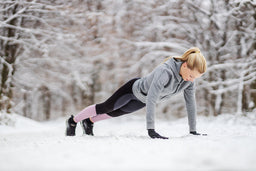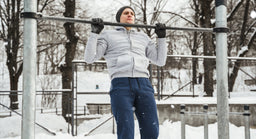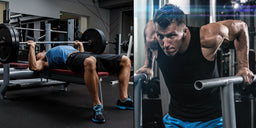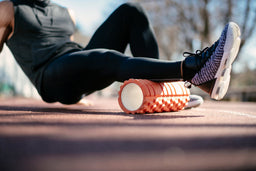
Unlock advanced calisthenics by adding weight to basic movements
Ready to master more advanced calisthenics movements? Now you’ve built strength and skills with the basics, it’s time to find the optimal training strategy to unlock more challenging calisthenics. Here’s our argument for adding external load to basic movements to advance your skills.
All calisthenics athletes reach a point in their journey where they want to learn more advanced moves like handstands, levers, and planche. But it’s not a case of just muscling through. Making progress in calisthenics takes strength, skill, and lots of practice.
Would it help to add weight to the basic movements? Is it really worth using some of your training time to do weighted calisthenics? That’s what we’re going to find out.
Can you use weights in calisthenics?
Yes, you can definitely add weights to calisthenics movements. Lots of athletes do this by wearing a weighted vest, using a dipping belt, or working with resistance bands.
There might be lots of reasons athletes choose to add weights to calisthenics training. One of the best is to alter one of the key training variables: resistance. By making yourself “heavier” through external load, you force your body to build more strength and muscle, which can help to unlock more difficult movements.
How to use weighted calisthenics to make progress
Once you get to the stage where basic, fundamental calisthenics movements feel easy (and you can bang out plenty of reps with good form), it’s a good idea to add external load. Not only will this help you build muscle, but it will temporarily make those easy exercises hard again. This will help you progress out of a plateau.
Master advanced calisthenics movements with weighted exercises
Adding weight to easier calisthenics movements will also help you get those intermediate exercises or advanced tricks that you’ve been aiming for. How?
All calisthenics movements are built on the fundamental movement patterns of pull, push, balance, and transfer of weight. If you make the basic versions harder by adding weight, you’ll find it easier to get the more advanced versions (without weight).
Here are some examples:
To work towards handstand push ups
Step 1. Bodyweight push ups
Step 2. Push ups with weighted vest
Step 3. Wall push up with weighted vest
Step 4. Wall assisted handstand (no weight)
Step 5. Wall assisted handstand push up
To work towards planche
Step 1. Band assisted straddle planche hold
Step 2. Bodyweight tucked planche hold
Step 3. Tucked planche hold with weighted vest
Step 4. Half lay planche hold (no weight)
To work towards front lever
Step 1. Banded pull backs with resistance band
Step 2. Scapula pull ups and pull ups with weighted vest or dipping belt
Step 3. Tucked front lever
Step 4. Tucked front lever raise
Just three examples, but you can see how adding weight to the simpler elements of calisthenics progressions (in our examples, the push ups, planche holds, and pull ups) will build the strength and control you could carry over into the advanced skills.
3 reasons to add weight as you progress to advanced calisthenics
Strength - adding external weight through weighted vest, resistance bands, or dipping belt makes your body work harder, build strength, and strengthen smaller supporting muscles
Perceived effort – by making the more basic movements feel harder, you might feel that the progressions actually feel easier because you have removed the external load factor
Enhance performance – the new challenge of weighted basics can help you overcome strength plateaus, and strengthen the foundations of more complex calisthenic movements
How to add weights to calisthenics movements
We don’t suggest you start adding weight to every calisthenics session or basic movement. Use load as a strategic training factor to build the strength and power you need to master key progressions.
Decide what movement you want to work on, and identify the fundamental basics (for hand balances it would be push ups, for lever work it would be pull ups).
Add weight to some of your working sets of those easier movements. Remember. the goal is not to get sore and tired from adding external load. The aim is to combine strength work, skill work, and drills as you work on advanced movements.
Adding weight isn’t the only way to manipulate calisthenics basics to progress faster. You could also play with tempo, eccentric training, time under tension, and training frequency in the basics.
Which basic calisthenics movements can you add weight to?
Pull ups and scapula pull ups – use a weighted vest or dipping belt
Dips – use a dipping belt or weighted vest
Push ups and hand balances – use a weighted vest or resistance bands
Squats and single leg work – use a weighted vest
When is it time to add weight to basic calisthenics movements?
Calisthenics is the art of mastering your bodyweight, but there’s a time and a place for using weighted tools like resistance bands and weighted vests. Many calisthenics athletes find they hit a strength plateau and – rather than adding more reps and sets – choose to add weight instead. Try adding weight to some of your basic movements to build more strength and keep your calisthenics journey a never ending adventure.
















